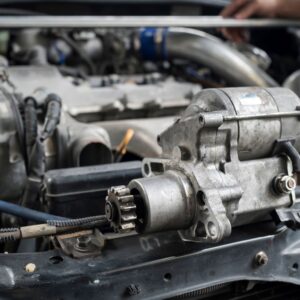Q: Where Is the Carburetor Typically Located?
A: The carburetor is usually on top of the engine underneath the air filter. This component typically connects to the gas pedal through mechanical linkage or a throttle cable.
Carburetors atomize liquid fuel into a gasoline spray, mixing it with air to prepare it for combustion in the cylinders.
Carburetors began to be replaced by fuel injection as early as 1968 (VW Type 3 went from a dual carburetor system to electronic fuel injection that year) until they finally became a thing of the past by 1989 due to tightening emissions standards.

Tips on How to Access the Carburetor
Whether you’re accessing your carburetor to clean, repair, or replace it, make sure you have all the tools you need on hand. The essentials include screwdrivers, pliers, a wrench and socket set, spray carburetor cleaner, and compressed air.
Make sure that the fuel valve is off before you access the carburetor if you’re working on a motorcycle. Car engines don’t have fuel valves but they do have a fuel pump.
Then, locate the fuel line leading to the carburetor and disconnect the fuel hose or line. A hose will be retained by a clamp, while a line will be metal and will be retained by an inverted flare nut. Examine rubber fuel lines. If they’re worn out, replace them to prevent leaks and other problems down the line.
Next, the throttle linkage must be disconnected along with any wires, brackets, etc. You might or might not need a lot of patience to get to the nuts or bolts that hold some carburetors because they can be in tight spots that make access difficult.
Underneath the carburetor is a gasket that typically needs replacing when the carburetor is removed and replaced, but some of these gaskets are reusable.
Underneath the carburetor is a gasket that typically needs replacing when the carburetor is removed and replaced, but some of these gaskets are reusable.
–Richard McCuistian, ASE Certified Master Automobile Technician
A bad carburetor can cause engine backfires, stalling, flooding (black smoke), no-starts due to wet spark plugs, hesitation on acceleration, and poor fuel economy among other symptoms. The carburetor has a choke that must work right if it’s automatic.

Any information provided on this Website is for informational purposes only and is not intended to replace consultation with a professional mechanic. The accuracy and timeliness of the information may change from the time of publication.

































